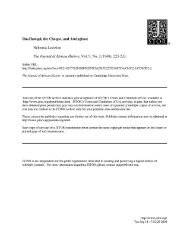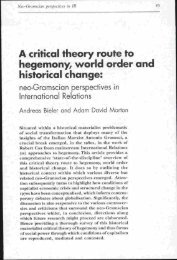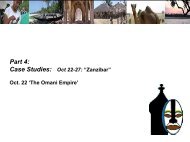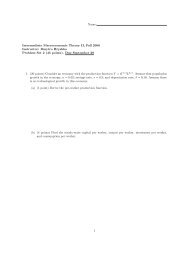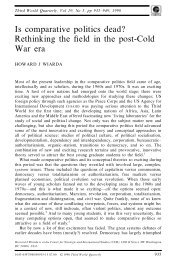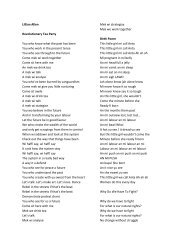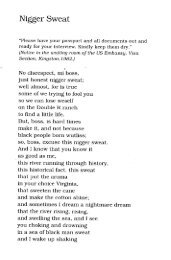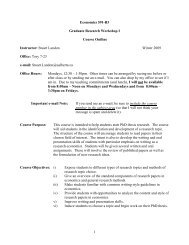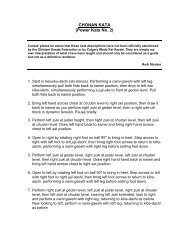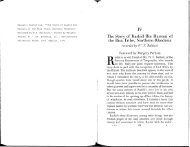personal memories revolutionary states and indian ocean migrations
personal memories revolutionary states and indian ocean migrations
personal memories revolutionary states and indian ocean migrations
Create successful ePaper yourself
Turn your PDF publications into a flip-book with our unique Google optimized e-Paper software.
Farsy wrote that of all the Muslim scholars of the coast, Amawi was the<br />
most skilled at, <strong>and</strong> involved in, debating Christian missionaries, <strong>and</strong> he specifically<br />
mentions Tozer, Steere, <strong>and</strong> Canon Dale. 31 Steere also wrote that he held weekly<br />
meetings with local Muslim shaykhs in his home, <strong>and</strong> it is likely that Amawi was a<br />
participant. In one letter he wrote, “Abdul Aziz called <strong>and</strong> asked for an explanation<br />
of the statement that man was made ‘in the image of God,’ which shocked them. I<br />
wrote <strong>and</strong> sent him an explanation in Swahili.” 32 Despite Amawi’s reputation as a<br />
debater with missionaries, he assisted Steere in the translation of some of the<br />
Psalms <strong>and</strong> the Gospel of Luke into Swahili. 33 In one of the Dar es Salaam<br />
fragments, Amawi mentions a debate that he had with Bishop Chauncy Maples in<br />
Christ Church, moderated by Sir Arthur Henry Hardinge. 34 Amawi says that he had<br />
known Maples since the days of Bishop Steere, <strong>and</strong> proceeds to cite the precise<br />
hour of Steere’s death—a sign, perhaps, of a close relationship between them.<br />
“THE APOLOGY OF AL-KINDI,”<br />
AND ‘ALI AL-MUNDHIRI’S RESPONSE<br />
In 1877 Steere suggested that the Society for the Promotion of Christian<br />
Knowledge (SPCK) in London might devote a special branch to the publication of<br />
“any <strong>and</strong> every book <strong>and</strong> tract on the Muhammadan controversy.” 35 Only three<br />
years later, the Turkish Mission Aid Society published an apologetic treatise written<br />
ca. 830 C.E. by an Arab Christian identified as ‘Abd al-Masih b. Ishaq al-Kindi, a<br />
courtier of the ‘Abbasid Caliph al-Ma’mun, in answer to a letter written to him by<br />
his friend, ‘Abdallah b. Isma‘il al-Hashimi, inviting him to embrace Islam. The text,<br />
edited by Anton Tien, was based on two manuscripts, one from Egypt <strong>and</strong> one<br />
from Constantinople. The book was reissued by the Society for the Promotion of<br />
Christian Knowledge in London in 1885, <strong>and</strong> at some point Tien undertook a<br />
translation entitled “The Apology of al-Kindi,” at the end of which he comments,<br />
with apparent frustration, “Both manuscripts are largely corrupt <strong>and</strong> differ in a<br />
number of passages. [The editor] has labored to put them together as best he could;<br />
he who has done his best is not to be blamed, even if he fails.” 36<br />
The book includes an introduction describing the circumstances under<br />
which Hashimi wrote his letter (pp. 2-3 of the Arabic), followed by Hashimi’s letter<br />
(pp. 3-37), then Kindi’s heated response (pp. 38-270), <strong>and</strong> finally a brief account<br />
from the Egyptian manuscript of al-Ma’mun’s response to their debate (pp. 270-<br />
272).<br />
Sir William Muir published a commentary, summary <strong>and</strong> partial translation<br />
of the text in 1882, with “the primary object” of placing it “in the h<strong>and</strong>s of those<br />
who will use it in the interests of the Christian faith.” Although Muir finds that<br />
Kindi’s arguments contain “a good deal that is weak in reasoning, some things that<br />
are even questionable in fact, <strong>and</strong> an abundance of censorious epithets against the<br />
Moslem, Jewish, <strong>and</strong> Magian faiths that might well have been materially softened,<br />
yet, taken as a whole, the argument is, from the Apologist’s st<strong>and</strong>point, conducted<br />
with wisdom <strong>and</strong> agility.” 37<br />
Muir’s hope that missionaries might use the text to debate with Muslims<br />
was apparently realized when an unnamed missionary brought it to the Ibadi<br />
shaykh, ‘Ali b. Muhammad al-Mundhiri, <strong>and</strong> used it to debate with him. Mundhiri<br />
describes the treatise as “important” (‘azimat al-sha’n) <strong>and</strong> “well-argued” (qawiyyat alburhan),<br />
<strong>and</strong> of better quality than the polemical works the missionary had brought<br />
to him earlier, which he had easily “refuted <strong>and</strong> destroyed.” Mundhiri felt obligated<br />
Vol. 5, Fall 2005, © 2005 The MIT Electronic Journal of Middle East Studies<br />
64



